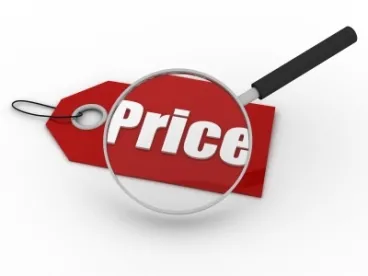As Texas and other southern states thaw from a frigid winter storm, companies doing business in these states should assess and take steps to minimize the risk of a price gouging claims. As suits are filed in the wake of the storms, companies should prepare now to defend such claims, whether from state attorneys general or from private plaintiffs. In road-mapping a defense strategy, the following information may be helpful.
Covered Products
Only certain products are covered by price gouging laws and these laws vary by state. It is important to identify whether products are being sold in states hit by the winter storm. For example, the Governors of Texas and Oklahoma declared states of emergency in the wake of the February winter storm, and the laws in those states cover different products. The Oklahoma statute covers, “any goods, services, dwelling units, or storage space” sold in the emergency area. Whereas in Texas, covered products include “fuel, food, medicine, lodging, building materials, construction tools, or another necessity.” As only products covered by the statute are subject to pricing restrictions, businesses facing price gouging allegations should carefully evaluate which products at issue may not be covered by the statute.
Permitted Increases
If a product is arguably within the scope of the emergency pricing restrictions, determine what price increases are permitted, as most states allow some price increases. If suit is brought alleging price gouging of a covered product, the extent of permitted increases will help determine whether the price at issue potentially violated the statute. Some states, like Texas, prohibit selling products at an “exorbitant or excessive price.” Other states, provide specific percentage caps, such as Oklahoma and Arkansas, which cap price increases at 10% more than the price charged immediately before the state of emergency.
Baseline Prices
The precise amount of a permitted price increases will often depend on a baseline price. Establishing the baseline price for each covered product at issue is essential – and not always straightforward. The formulas for baseline prices vary by state. For instance, in Oklahoma, the baseline price is the price charged “immediately prior to the state of emergency.” Any price increase above 10% of that baseline is presumptively illegal. In Oklahoma, the Governor declared a state of emergency on February 12, so the baseline price would be the seller’s price on February 11. These baseline prices lay the foundation for showing that the price increase was permitted by the statute. Unlike the states mentioned above, Texas does not provide a specific baseline measurement, instead, it prohibits selling covered products at an “exorbitant or excessive price.” However, prices for these products just before the emergency would most likely still be relevant in determining whether a price increase is exorbitant or excessive. Additionally, businesses should consider that COVID-19 states of emergency may still be in effect, adding an additional layer to consider when calculating a product’s baseline price.
Calculating the Increase
From the established baseline, there are variety of ways a price increase may be justified and permissible under the statute. In some states, simply exceeding the baseline price, or the statutory percentage increase for the covered product may violate the pricing restrictions. Other states evaluate price increases relative to profit margin. For example, in Oklahoma, if costs increase or non-emergency factors led to the price increase, the increase could be legal if the profits margin for the seller did not increase as well. Most likely, for states without specific percentage caps, such as Texas, stable profit margins will provide evidence that the price increase was not “exorbitant or excessive.” Margins, costs, and comparable competitive prices could all serve as data points for a court determining the legality of a price increase.
Defenses
Other defenses may be available as well. For example in Arkansas, the price gouging statute provides a specific exception for increased costs. A successful defense might establish that the alleged price increase was “directly attributable” to increased labor or materials costs, or to price increases by suppliers. Similarly, Oklahoma provides a specific exception for increased costs attributable to price increases on a petroleum commodity market or other non-emergency factors. Texas does not explicitly provide such an exception, but increased costs would arguably serve as defense to an allegation of “excessive” prices.
Additionally, the plaintiff in any suit must have the right to sue under the price gouging statute. Some states limit price gouging enforcement to the state’s attorney general. Other provide a private right of action. However, for a private individual to bring such a suit, they must have experienced a direct harm from the allegedly illegal conduct. A careful analysis of a private action may reveal that the complainant does not have sufficient grounds to bring a claim.
When facing a price gouging suit, companies should be wary of claims that a simple price increase inevitably imposes liability. With multiple factors at play in pricing calculations and the availability of defenses, many price increases are permissible. Companies at risk of a price gouging claims should consider the extent to which their products or services may be covered by a state’s pricing restrictions along with and the availability of potential justifications for price increases. While the South digs out of the snow, companies should not unnecessarily fear being buried in price gouging suits.





 />i
/>i
